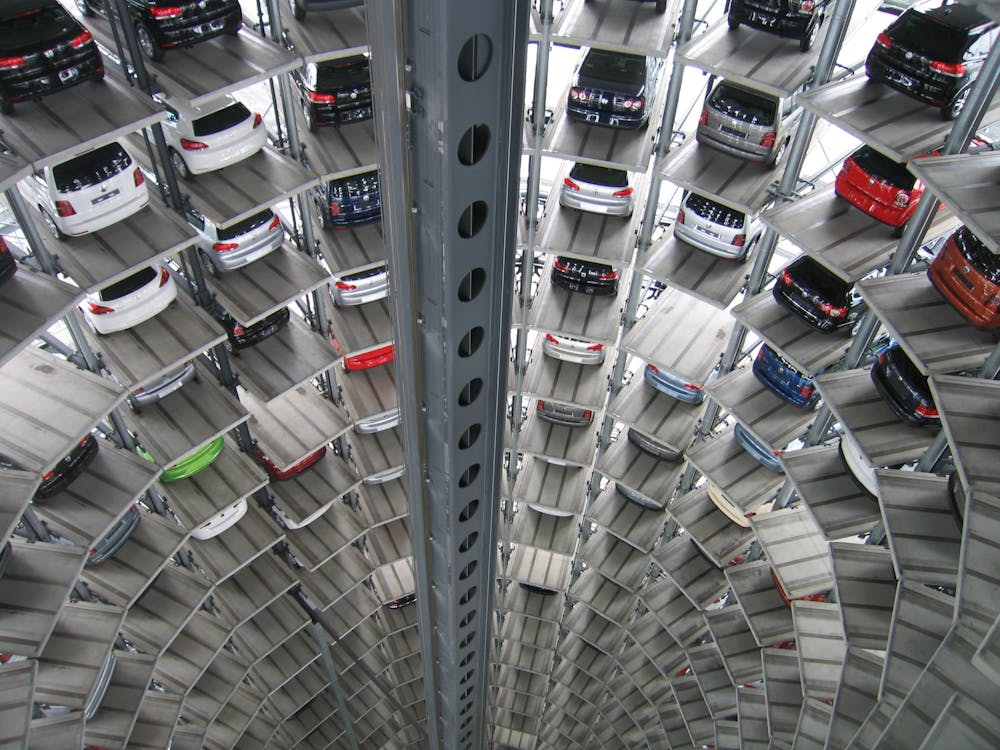Revolutionizing Automotive Safety: The Role of Blockchain Technology
In the ever-evolving landscape of automotive technology, Blockchain has emerged as a transformative force with the potential to enhance various aspects of the industry, including automotive safety. The decentralized and secure nature of Blockchain brings a unique set of capabilities that can significantly contribute to improving safety measures in vehicles. In this exploration, we delve into how Blockchain technology can be harnessed to revolutionize automotive safety, ensuring transparency, traceability, and trust in the interconnected world of smart vehicles.
 |
| Revolutionizing Automotive Safety: The Role of Blockchain Technology |
Understanding Blockchain in the Automotive Context:
Blockchain is a decentralized and distributed ledger technology that records transactions across multiple computers in a secure and transparent manner. Each record, or block, is linked to the previous one, forming a chain. This structure ensures that once a block is added, it is nearly impossible to alter previous blocks, providing a high level of security and transparency.
Key Components of Blockchain for Automotive Safety:
1. Immutable Record Keeping: The immutability of Blockchain ensures that once data is recorded, it cannot be altered. This feature is crucial for maintaining the integrity of safety-related information stored on the blockchain.
2. Smart Contracts: Smart contracts are self-executing contracts with the terms of the agreement directly written into code. In the automotive safety context, smart contracts can automate and enforce predefined safety protocols, triggering actions or alerts in response to specific events.
3. Decentralization: Blockchain operates on a decentralized network of nodes, eliminating the need for a central authority. This ensures that safety-related information is not controlled by a single entity, reducing the risk of manipulation or tampering.
4. Traceability and Transparency: Every transaction or event recorded on the blockchain is transparent and traceable. This feature is invaluable for tracking the entire lifecycle of a vehicle, including its safety-related history, from manufacturing to maintenance and accident records.
5. Data Integrity and Security: Blockchain uses advanced cryptographic techniques to secure data. This ensures the integrity and security of safety-critical information, protecting it from unauthorized access or malicious manipulation.
Applications of Blockchain in Automotive Safety:
1. Provenance Tracking: Blockchain can be used to track the origin and history of vehicle components. This ensures that only genuine, quality-tested parts are used in the manufacturing process, reducing the risk of safety-related issues due to counterfeit or substandard components.
2. Vehicle Identity and Authentication: Blockchain can serve as a secure and tamper-resistant ledger for storing and verifying the identity of vehicles. This can prevent issues related to vehicle cloning or identity theft, enhancing overall automotive security.
3. Maintenance and Repair History: Blockchain can record the entire maintenance and repair history of a vehicle, including details of services, replacements, and repairs. This information is valuable for both owners and service providers, ensuring that safety-critical components are regularly inspected and maintained.
4. Recall Management: In the event of a safety recall, Blockchain can streamline the process by providing a transparent and traceable record of affected vehicles. This ensures efficient communication between manufacturers, regulators, and vehicle owners, facilitating timely repairs and reducing safety risks.
5. Real-time Data Sharing for Autonomous Vehicles: As autonomous vehicles rely on real-time data for decision-making, Blockchain can facilitate secure and instant data sharing between vehicles, infrastructure, and other relevant stakeholders. This ensures that safety-critical information is communicated seamlessly within the connected ecosystem.
Example Scenario: Recall Management with Blockchain
Consider a scenario where a vehicle manufacturer identifies a safety issue in a certain model and initiates a recall. By leveraging Blockchain, the manufacturer can create an immutable record of the affected vehicles, including their Vehicle Identification Numbers (VINs), production dates, and the specific safety concern.
This information is shared with authorized service centers and regulatory authorities through the blockchain network. Smart contracts automatically trigger notifications to affected vehicle owners, guiding them through the recall process and scheduling necessary repairs.
As vehicles are serviced, the completion of the recall is recorded on the blockchain, creating a transparent and auditable record of the entire recall process. This ensures that all stakeholders have real-time visibility into the status of the recall, promoting accountability and efficiency in addressing safety concerns.
Challenges and Considerations:
While the potential benefits of implementing Blockchain in automotive safety are significant, there are challenges and considerations that must be addressed:
1. Integration with Existing Systems: Integrating Blockchain with existing automotive systems and infrastructure requires careful planning and collaboration among stakeholders.
2. Standardization: Developing standardized protocols for implementing Blockchain in the automotive industry is essential to ensure interoperability and widespread adoption.
3. Data Privacy and Regulatory Compliance: Adhering to data privacy regulations and ensuring compliance with industry-specific standards are critical considerations when dealing with sensitive safety-related information.
4. Scalability: As the number of connected vehicles increases, Blockchain networks must be scalable to handle the growing volume of transactions without compromising performance.
The Future of Blockchain in Automotive Safety:
As Blockchain technology continues to mature, its applications in automotive safety are expected to evolve and expand. Collaborative efforts among automakers, technology providers, and regulatory bodies will play a crucial role in shaping industry standards and frameworks for the responsible implementation of Blockchain in enhancing automotive safety.
In conclusion, Blockchain has the potential to revolutionize automotive safety by providing a secure, transparent, and decentralized platform for managing safety-related information. From provenance tracking to real-time data sharing for autonomous vehicles, the applications of Blockchain in automotive safety hold the promise of creating a safer, more trustworthy, and interconnected automotive ecosystem.
